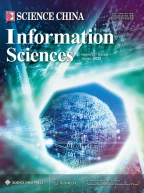Abstract
Departing from the narrowband channel model, more and more researchers have recently considered the application of multiple-input multiple-output (MIMO) systems over frequency-selective fading channels in combination with the orthogonal frequency-division multiplexing (OFDM) technique. In this paper, we focus on the capacity of MIMO-OFDM systems and how to increase the capacity. It has been proved that the capacity of a MIMO system with space-dimensional water-filling power allocation is greater than that of the system with uniform power allocation. In MIMO-OFDM systems, there is an additional degree of freedom to allocate power with respect to MIMO systems: the OFDM sub-channels in frequency-domain. With the singular value decomposition (SVD) applied to the channel frequency response matrix, the two-dimensional water-filling power allocation algorithm for MIMO-OFDM systems is proposed based on the Lagrange method, and the corresponding capacity analysis formula is derived. Simulation results show that the capacity of a MIMO-OFDM system with the proposed two-dimensional water-filling power allocation is greater than that of the system with uniform power allocation and also greater than that of the system with the one-dimensional water-filling power allocation.
Similar content being viewed by others
References
Raleigh G G, Cioffi J M. Spatio-temporal coding for wireless communication. IEEE Trans Commun, 1998, 46: 357–366
Diggavi S N. On achievable performance of spatial diversity fading Channels. IEEE Trans Inf Theory, 2001, 47: 308–325
Bliss D W, Forsythe K W, Hero A O. Environmental issues for MIMO capacity. IEEE Trans Signal Process, 2002, 50: 2128–2142
Lozano A, Tulino A M. Capacity of multiple-transmit multiple-receive antenna architectures. IEEE Trans Inf Theory, 2002, 48: 3117–3128
Gesbert D, Shafi M, Shiu D. From theory to practice: an overview of MIMO space-time coded wireless systems. IEEE J Select Areas Commun, 2003, 21: 281–302
Peled A, Ruiz A. Frequency domain data transmission using reduced computational complexity algorithms. In: Proc IEEE ICASSP-80, Denver, CO, 1980. 964–967
Cimini L J. Analysis and simulation of a digital mobile channel using orthogonal frequency division multiplexing. IEEE Trans Commun, 1985, 33: 665–675
Bölcskei H, Gesbert D, Paulraj A J. On the capacity of OFDM-based spatial multiplexing systems. IEEE Trans Commun, 2002, 50: 225–234
Bölcskei H, Borgmann M, Paulraj A J. Impact of the propagation environment on the performance of space-frequency coded MIMO-OFDM. IEEE J Select Areas Commun, 2003, 21: 427–439
Gong Y, Letaief K B. An efficient space-frequency coded OFDM system for broadband wireless communications. IEEE Trans Commun, 2003, 51: 2019–2029
Su W F, Safar Z, Liu K J R. Full-rate full-diversity space-frequency codes with optimum coding advantage. IEEE Trans Inf Theory, 2005, 51: 229–249
Fozunbal M, McLaughlin S W, Schafer R W. On space-time-frequency coding over MIMO-OFDM systems. IEEE Trans Wirel Commun, 2005, 4: 320–330
Borgmann M, Bölcskei H. Noncoherent space-frequency coded MIMO-OFDM. IEEE J Select Areas Commun, 2005, 23: 1799–1810
Cover T M, Thomas J A. Elements of Information Theory. New York: Wiley, 1991
Al-Dhahir N, Cioffi J M. Block transmission over dispersive channels: Transmit filter optimization and realization, and MMSE-DFE receiver performance. IEEE Trans Inf Theory, 1996, 42: 137–160
Narula A, Lopez M J, Trott M D. Efficient use of side information in multiple-antenna data transmission over fading channels. IEEE J Select Areas Commun, 1998, 16: 1423–1436
Scaglione A, Barbarossa S, Giannakis G B. Filterbank transceivers optimizing information rate in block transmissions over dispersive channels. IEEE Trans Inf Theory, 1999, 45: 1019–1032
Vucetic B, Yuan J H. Space-Time Coding. Beijing: China Machine (authorized from New York: Wiley), 2004
Jeng S S, Okamoto G T, Xu G H. Experimental evaluation of smart antenna system performance for wireless communications. IEEE Trans Antennas Propagat, 1998, 46: 749–757
Razavilar J, Farrokhi F R, Liu K J R. Software radio architecture with smart antennas: a tutorial on algorithms and complexity. IEEE J Select Areas Commun, 1999, 17: 662–676
Kavak A, Torlak M, Vogel W J. Vector channels for smart antennas-measurements, statistical modeling, and directional properties in outdoor environments. IEEE Trans Microwave Theory Tech, 2000, 48: 930–937
Author information
Authors and Affiliations
Corresponding author
Rights and permissions
About this article
Cite this article
Jiang, Y., Shen, M. & Zhou, Y. Two-dimensional water-filling power allocation algorithm for MIMO-OFDM systems. Sci. China Inf. Sci. 53, 1242–1250 (2010). https://doi.org/10.1007/s11432-010-0088-7
Received:
Accepted:
Published:
Issue Date:
DOI: https://doi.org/10.1007/s11432-010-0088-7


